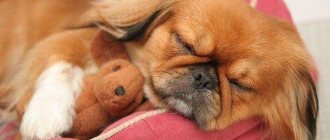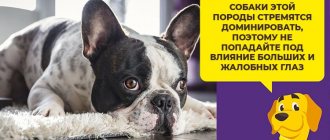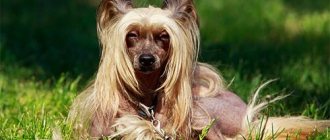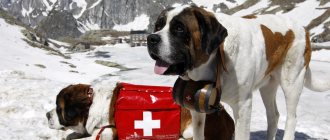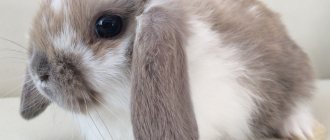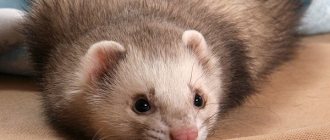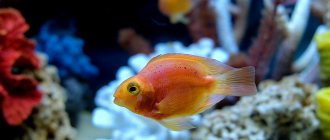This dog captivated the audience in the movie called “Hachiko: The Most Faithful Friend.”
The movie describes the true life story of a dog who, for many years, waited for his deceased owner.
People learned about his fate and erected a monument to him.
Thanks to the film, in which Richard Gere played the main character, the Hachiko dog breed gained national fame.
And the dog became a model of loyalty and selfless love in Japan.
What was the real story
The snow-white dog was born in the fall of 1923, in Japan, on the island of Honshu, to a farmer.
After some time, the farmer decided to give it to Tokyo University professor Hidesaburo Ueno. Who named him Hachiko.
Every day when the professor went to the institute, the dog ran after him and waited for him at Shibuya station.
Trouble came on May 21, 1925, by which time Hachiko was no more than two years old. On this day, the professor had a stroke.
He died and never arrived at the station where Hachiko was waiting for him.
No matter how many times Hachiko was given to other people, he escaped every time and returned to his home.
When the dog realized that he would not see his owner here again, he waited for his arrival on the station platform.
Every day, at exactly four o'clock, Hachiko came to the station and selflessly waited for his master.
This went on for ten years. Passers-by fed him. One day, one of the students noticed him. He was amazed by the fate of the dog, and began to write articles about him and his dedication.
Monument to Loyalty
In 1933, his articles were published by the Japanese press, and the dog became a national sensation. People were amazed how many years a dog could remain faithful.
Adults cited him as an example of selfless devotion to their children. A bronze monument was erected to him.
The monument was erected on the square of that same station. Unfortunately, during the Great Patriotic War, the monument was melted down. But, in 1948, this famous monument to the faithful dog was restored.
Hachiko was found dead in the spring of 1935. After which, a day of mourning was declared in Japan. In the Tokyo National Museum, you can see his effigy .
Today, many years later, a monument to the devoted dog can be seen at Shibuya Station; he still believes and waits for his owner.
In Japan, excursions are held; adults and children come from all over the country to see the Hachiko monument.
Choosing a puppy
When buying a puppy, you must remember that black color on the face and drooping tail are unacceptable for representatives of this breed.
If there are many puppies born in one litter, you should not buy just one of them. Choose a medium-sized, active and playful baby from a small litter.
Healthy puppies are well-fed, not shy, and not aggressive.
Akita Inu puppies are very temperamental, and only as they mature do they become calm and reasonable.
In raising this dog, the main point is the socialization of the baby. In order for the dog to grow up calm, smart and with a healthy psyche, you will have to work on this issue.
How much do puppies cost?
After the film about Hachiko was shown on the screens, the number of people wanting to buy this dog for themselves increased fifteenfold!
How much an Akita Inu puppy will cost you will depend on what kind of baby you buy.
For example, a dog without documents can cost from fifteen to thirty-two thousand rubles. At the same time, a representative of the show class will come out within fifty, one hundred thousand rubles.
Description of the breed
The current breed standard was approved in 2001. Akita Inu are large dogs with a balanced and strong build. These dogs are modest, but with a developed sense of self-esteem. The height of males is 64-70 cm, females -58-64 cm.
- The Akita Inu's head is proportional to the body, the forehead is wide, and there is a clear hollow in the middle. Skin without wrinkles. The transition from forehead to muzzle is well defined. The muzzle is powerful, wide at the base, narrowed towards the nose, but not pointed. The muzzle of the Akita Inu is very similar to that of a bear.
- The ears are relatively small, thick, erect, triangular. The tips are somewhat rounded. Set moderately wide and tilted forward, visually continuing the line of the neck.
- The eyes are relatively small, almost triangular in shape, as the outer corners are raised towards the ears. The eyes are moderately spaced, the eye color is dark brown (the darker the better). The Akita Inu has a straight nose. The nose is large and black. Small areas of scattered depigmentation are permissible only with a white coat; the black color of the lobe remains preferable.
- Dogs have a scissor bite, powerful teeth, and moderately developed cheekbones. Lips fit tightly.
- The body of dogs is strong and powerful. The neck is muscular, without dewlap. The stomach is taut. The chest is deep, with moderately arched ribs and a developed forepart. The back of the Akita Inu breed is straight, strong, the lower back is muscular and wide.
- The Akita Inu's forelimbs are straight, with strong bones, the shoulders are moderately sloping, the elbows are tightly pressed to the body. The paws are round and balled, the pads are thick, the toes are arched.
- The hind limbs of the Akita Inu are well developed, with powerful muscles. The paws, like the front paws, are round in shape, with toes gathered into a ball and thick pads.
- The tail is thick, set high and carried over the back. Shapes from sickle to double ring are acceptable. When the dog lowers its tail, the tip reaches almost to the hock joints.
- The Akita Inu has a two-layer coat. The undercoat is thick and soft, the outer coat is straight and hard. On the withers and rump, tail and “pants” the hair is slightly longer than on the dog’s body.
We advise you to read: Phalen (Papillon) Dog Breed
The color of the Akita Inu can be red-fawn, sesame type (black tips on red-fawn hair), brindle and white. Dogs of all colors, with the exception of white, must have "urajiro". This is white hair on the cheekbones, sides of the muzzle, lower jaw, chest, neck, tail, belly and inner surfaces of the legs.
Care
The coat of dogs of this breed does not require special care; it can be brushed four times a month. And only twice a year, when the pet begins to shed, is it brushed more often.
For this procedure, two combs are needed, for the short coat and for the undercoat.
The Akita Inu is bathed twice a year; too frequent washing can damage the hair.
Twice a month, it is necessary to trim the nails and brush the teeth with special pastes.
Walks
Akita Inu is a dog with character, so walks should be long and active. As a rule, the dog itself determines where to go and loves to walk without a leash.
As often as possible, let your pet off the leash and give him the opportunity to run around to his heart's content..
This active dog requires regular exercise, so daily walks should be at least two hours a day.
It’s a good idea to change walking places and toys periodically, thereby maintaining the dog’s interest.
Feeding
In Japan, for many years, these dogs were given rice, seafood, seaweed and vegetables, eggs and various game as food.
Thoroughbred Akita Inu adapted to just such a diet may experience a severe allergic reaction to poultry, veal, and fatty milk-containing products. You should also not feed them corn and oatmeal.
Store-bought dry food should not contain soy; it should contain one source of protein and a maximum protein content of at least 26%.
Puppies should receive cottage cheese, boiled fish and vegetables daily . Feeding babies up to five months should be at least four times a day.
Only an adult dog can be fed two or three meals a day. Don’t forget about vitamin and mineral complexes.
A single portion should be about ten percent of the dog’s weight, and only if the dog cannot cope with such a volume, it is reduced slightly.
The question often arises how many years do Akita Inu live? Representatives of this breed live on average 12-15 years.
They often develop diseases associated with natural features:
- joint dysplasia;
- skin diseases;
- vision problems;
- blood diseases;
- allergies.
Nutrition
When it comes to nutrition, Akita Inus are not too picky. In the homeland of the breed, the best food for Akitas is rice mixed with shark meat. Accordingly, fish must be present in a dog’s diet. Some experts advise adding seaweed to Akita's food.
We advise you to read: Basset Hound Dog Breed
Be careful when choosing commercial food for your Akita Inu: most of these foods contain a lot of soy, and Akitas do not digest this product well. An adult dog needs to be fed twice a day.
Photo gallery
We bring to your attention photographs of the legendary Japanese dog Akito Inu, also known as Hachiko. Despite its size, it is a very kind and affectionate dog, but if necessary, it can also become an excellent guard.
Akita Inu character
Akita Inus have good personalities, making them wonderful family pets. They are known as quiet dogs that only bark when required. Many lovers of this breed say that Akita Inus make them feel relaxed and calm, and therefore help people cope with stress.
Under the mask of calm lies a real fighter who should not be angered. Affectionateness is accompanied by extreme restraint in expressing emotions: having met you from work, the dog will joyfully jump around you... for exactly five minutes, then it will prefer to calmly observe events from the side. Akita Inus love to play, but they end the game as soon as they get bored with it. An Akita will not, like a Labrador or a collie, run around for hours after a ball thrown to it.
In addition to their calm, sociable nature, Akita Inus are known for their cleanliness, with some people comparing them to cats for their lack of odor and clean appearance.
However, since Akita Inu have possessive and hunting instincts, it is advisable to accustom them to communicate with other animals at an early age. Akita Inus that have been raised with other animals, cats or dogs, will continue to get along well with them, but without early socialization they can be aggressive towards other pets, especially dogs of the same sex.
The Akita Inu is an intelligent and calm dog, but at the same time independent and strong-willed, so training such a dog may not be easy. This breed is better suited to people with a certain level of experience with large dogs.
Very loyal, Akita Inus are powerful protectors, which makes them good watchdogs. The Akita Inu can be very stubborn and assertive and if not given enough exercise or bored, can become destructive or difficult to control. Akita Inu needs a fair amount of exercise and long walks. In addition, these dogs cope with transporting or moving various loads: they can easily be harnessed to a small cart or sled.
We advise you to read: American Foxhound Dog Breed
Akita Inu dogs are very patient and loyal, get along well with children and tend to protect them. Akita Inus are excellent in communicating with children, especially if they grew up in the house at the same time as them. As a rule, these dogs equally recognize all members of the owner's family. Incomparable watchmen, they are also considered “talking”: various modulations of the growl create the effect of a kind of “dog” speech. As a rule, Akita Inu has a special growling greeting for each family member.
The Akita's attitude towards strangers is usually neutral. She is not inclined to attack a person, but she will warn her owner about the appearance of a stranger on her territory - often with a roar. In general, the Akita is a calm, balanced dog that loves children if raised with them. But you can’t leave children alone with an Akita, especially if friends come over and start noisy games. The dog may not appreciate the jokes of the little naughty boys and will decide to come to the aid of his owner’s children.
